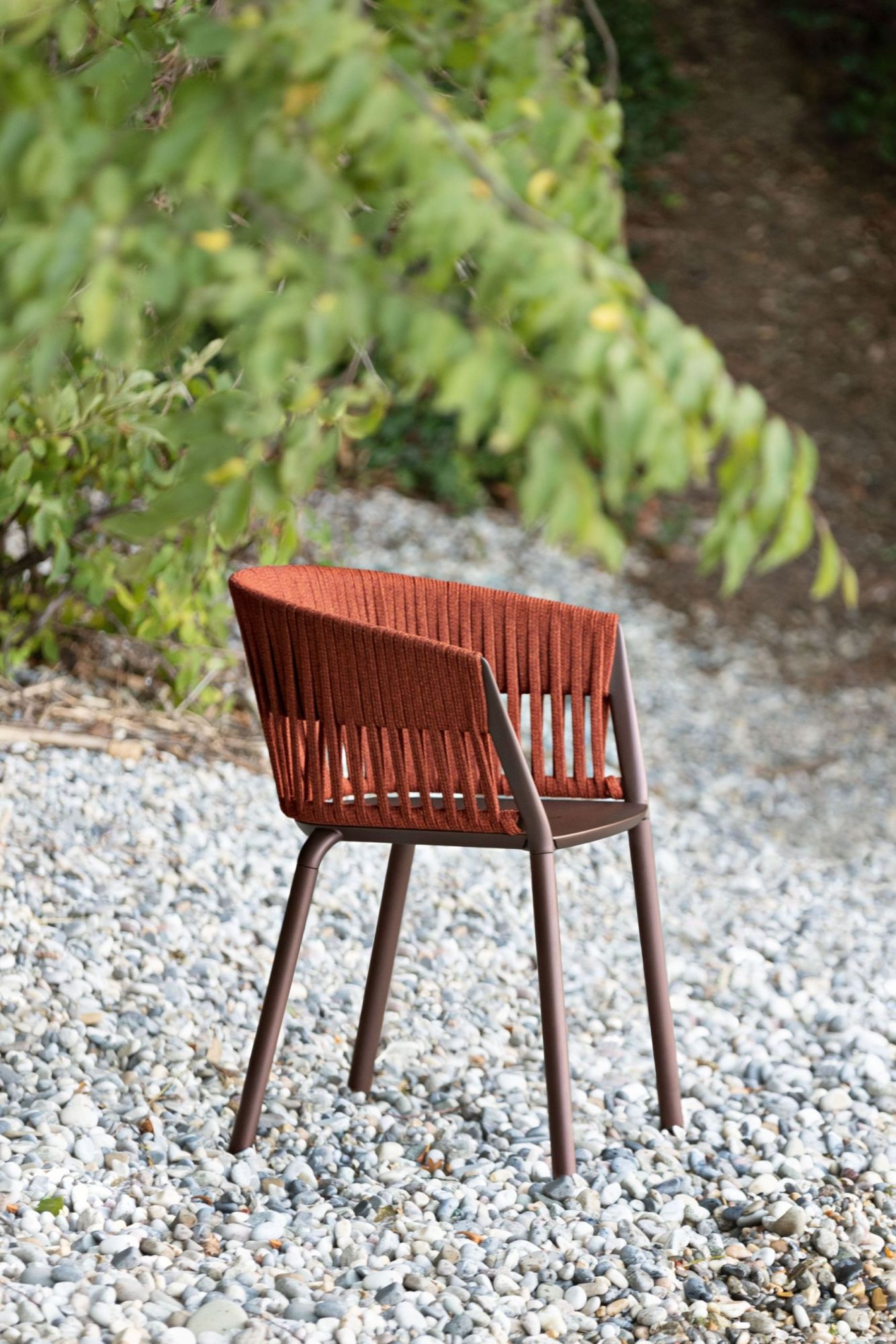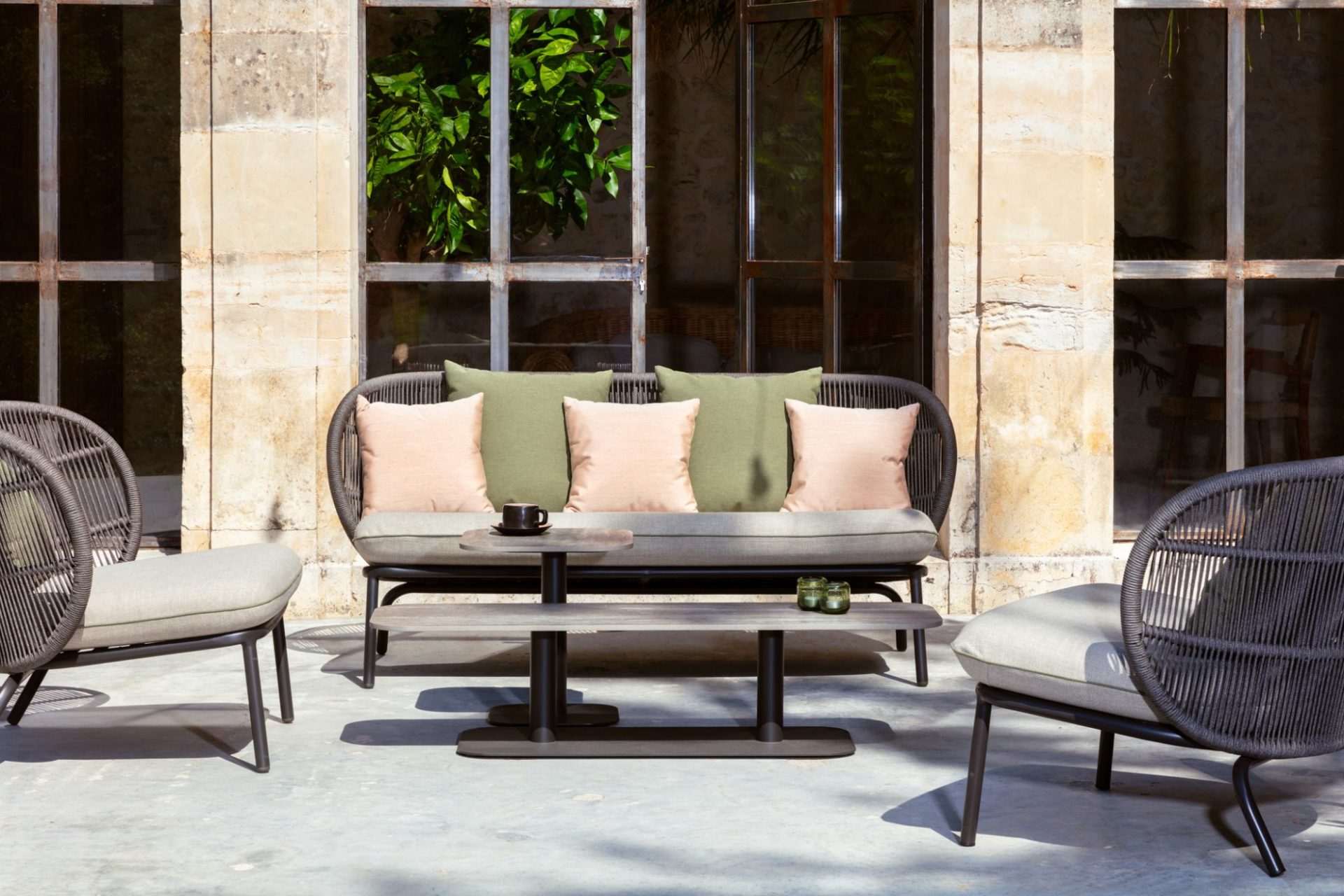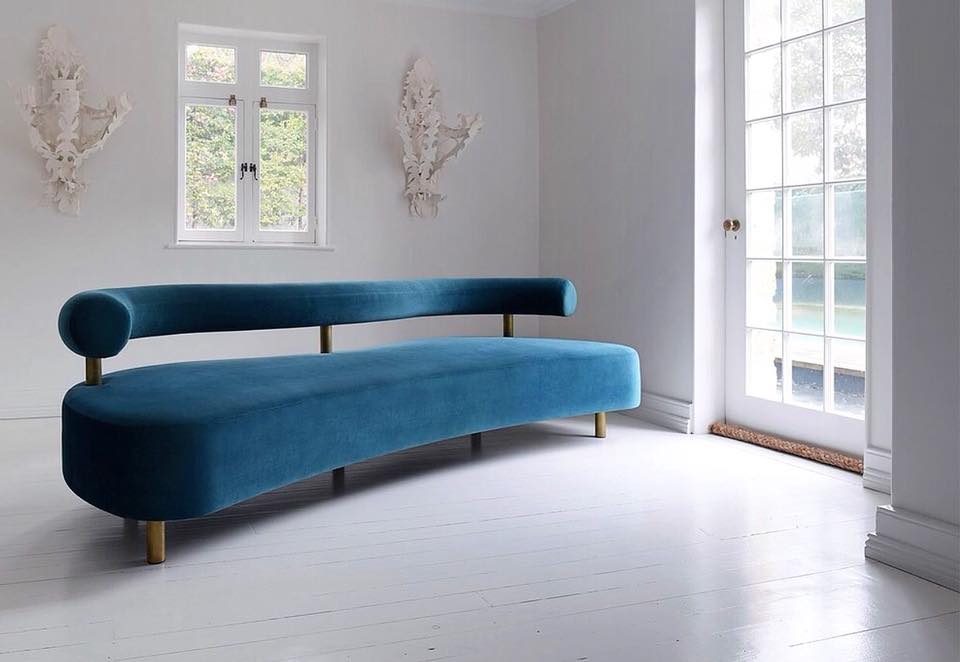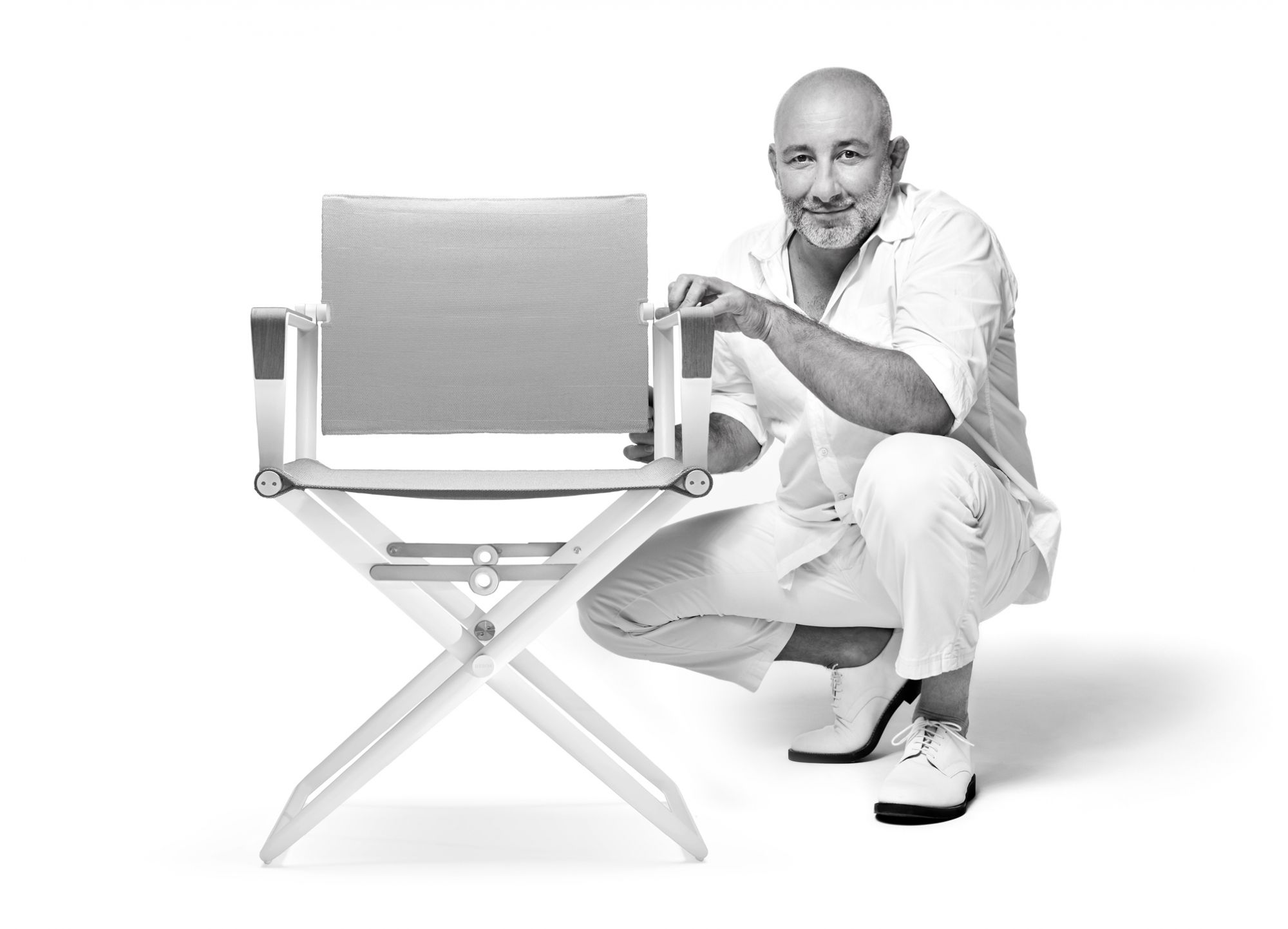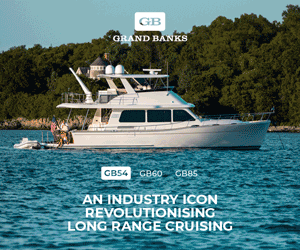Blurring the lines
For the last century, marine interior designs have been distinct to those on land, but a new trend in furniture has started to buck this axiom.
06 July 2021
When the 79-metre superyacht Delphine first launched in April 1921, its size defined it as astonishing. However, inside, it was no more than typical for the era. During the first half of the 20th century, the pursuit of furnishings for superyachts essentially replicated the level of opulence found on land.
In design, as it is with mirrors, value is defined by how well it can convey and reflect, and Delphine’s lavish interiors had been crafted by Tiffany and Co. Polished mahogany, robust carpet, meticulous carvings and grand decorations that stood as testament to the elegance of 18th- and 19th-century manors were all embraced.
Today, the idea of employing carpet, chandeliers or a grand dining room feels maladaptive to interior trends as in the second half of the 20th century, the desire to reproduce was replaced with the uniform, muted aesthetic of whites, nautical blues and lacquered wood. A new form of luxury that set the framework for the custom movement of the last 30 years.
“In the opening decade of the new millennium, there has been a revolution in interior yacht design: experimental project designs focus on the materials and light,” proposes Mariateresa Campolongo in her 2017 paper, ‘House and yacht: the aesthetics of the interior as a link between different sectors’.
She continues, “The projects of Pab by Admiral shipyard, Sai Ram of Benetti shipyard, Nina J by Baglietto shipyard, Mikymar of Canados shipyard and Stella Maris of Viareggio Superyacht shipyard are the vanguard of an innovative aesthetic culture, much closer to the land-based environment.”
While this trend of individualism also sees a return of recreation to the home, the story of interiors is that there has always been a distinction between those found on land and what is found at sea – a separation largely defined by the limitations of space and extreme conditions.
But over the last five years, this line has become blurred. With the rise in traditionally land-based furniture that is now suitable for yachts, brands that once focused on decorating a home now cater to the marine market.
According to Amanda Jacobs, this isn’t necessarily the result of brands diversifying their portfolio for a new market, but rather its existing collection meeting the necessary parameters. “We don’t build furniture just to be used on yachts,” she says.
“We build it to be used in any outdoor environment, in materials that can be exposed to any type of weather extremity.”
Jacobs is the New South Wales Businesses Development Manager of Cotswold Furniture, an Australian retailer and producer of luxury indoor and outdoor furniture since 1981, stocking brands that include Vincent Sheppard, Barlow Tyrie and Made in the Shade.
As she explains, “Cotswold has a reputation for selling quality furniture that lasts a long time, without the worry of it being exposed to all types of weather.”
Most of the offerings from the brands designed to handle being outdoors – as well as being of a contemporary, mid-century aesthetic – are comprised of aluminium or Myanmar teak.
Coincidentally, outdoor yacht furniture needs to be movable but also durable in extreme conditions and able to weather an abundance of salt. Conditions that are ideal for the lightweight strength of aluminium and the longevity of teak.
“With aluminium frames and synthetic looms as well as outdoor fabrics, the materials from which our products are made are suitable for the weather exposure that would happen on a yacht,” she says, adding Cotswold’s use of synthetic looms began close to nine years ago.
She admits to being across only a few orders specifically for boats but says she’s beginning to see a trend, albeit small, over the last year toward home furniture appearing on yachts.
Others in the furniture industry are starting to notice as well: “It’s only been in the last three or four years,” says Workshop28 Managing Director Ben Duemmer. “With yacht interiors, the timing gets a lot more compressed – people don’t have 18 weeks for furniture to come out of Europe.”
Workshop28 is a Gold Coast-based joinery and marine fit-out manufacturer specialising in high-end marine interiors and bespoke custom furniture – the latter of which Duemmer believes is the reason for this blurring between traditional and marine furniture.
“With existing retailers, you can only get what they’re marketing at the time, so we find that we can customise the furniture a lot better,” says Duemmer. “We can build the furniture to that quality, and build for what they like, but also customise it.”
A 2020 report from industry researcher IBISWorld stated that Australia’s furniture retail industry is forecast to decrease by 8.6 percent in 2020–21 due to “declining discretionary incomes and negative consumer sentiment.”
At the same time, according to Google Trends, custom furniture is now being searched for by Australians at a rate almost double that in 2016. Duemmer explains, “You can buy some nice furniture that’s off the shelf, but it’s not suited to a boat.
“We’re doing some ottomans for a boat at the moment – beautiful leather stitch with all the buttons and whatnot. The ottomans are quite big because what’s important on boats is storage; we’re making these ottomans with secret lids you can store things in.”
It’s a trend he believes will only increase post COVID.
“Manufacturing in Australia will grow in strength, especially on the furniture and interior side. People are going to want to spend their money in Australia,” says Duemmer, adding that custom builders who can match the quality of designer brands in Europe with better service, faster production and the choice of customisation will only encourage this path.
Workshop28 owner Simon Little agrees but qualifies: “I see it more on the distribution side; that’s where it’s had more of an effect.
“Marine furniture has always had to be custom made because it was always a one-off – that may be translating to the residential side of things rather than the residential side of things translating to marine.”
He adds, “If anything, there’s probably a lot more knowledge of what’s out there. People are more prepared to pay a bit of extra for it because they’re done with the mass-produced rubbish.”
Both Little and Duemmer make a compelling case for the influence and appeal of customisation, but it doesn’t explain the emergence of traditionally non-yachting furniture in the marine market.
Between 2011 and 2017, German outdoor furniture manufacturer DEDON released two collections conceived by French designer and inventor Jean-Marie Massaud: the DEAN and the SEAX. Design-wise, nothing felt out of place – both embodied the same minimalist, mid-century design iconic of the company.
But what’s curious was the association with yachts – the aluminium chair in the DEAN range was inspired by the streamlined yachts of the America’s Cup, and the SEAX chairs and couches were comprised of aluminium, plywood and teak. Designs not made specifically for yachts, they offered the potential for yacht use.
This trend continued last year with another Massaud collection, SEALINE – a series of couches, day beds and coffee tables produced in Trevira CS, propylene, acrylic and teak.
“More and more, people want a lifestyle that’s more in line with their sensitivities,” explains Massaud on his observations.
According to the French designer, a growing appreciation of interior design by owners or an emerging interest from furniture businesses into this industry are all potential factors for this movement, but so is this wider, meta value of how a yacht is furnished.
Massaud explains that superyacht furnishings were once quixotic, “arranged like an antic urban apartment with Louis XVI furniture or a Las Vegas club.” The underlying goal was to demonstrate status. But this priority, as Massaud asserts, has evolved with more elegance and consistency “thanks to contribution of good architects.
“In my opinion, furniture must follow this development. And what’s good for the sea is good for the exterior of our homes.”
This notion of not replicating but rather revealing represents a shift in focus. One that ultimately does make sense.
cotswoldfurniture.com.au
workshop28.com.au
massaud.com
This article originally appeared in Ocean #95. To read more from this issue, click here.





